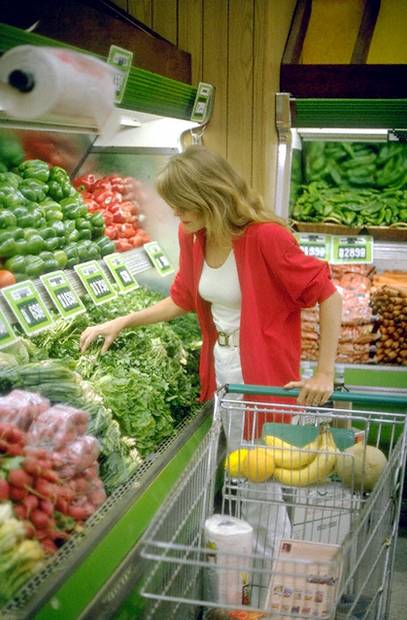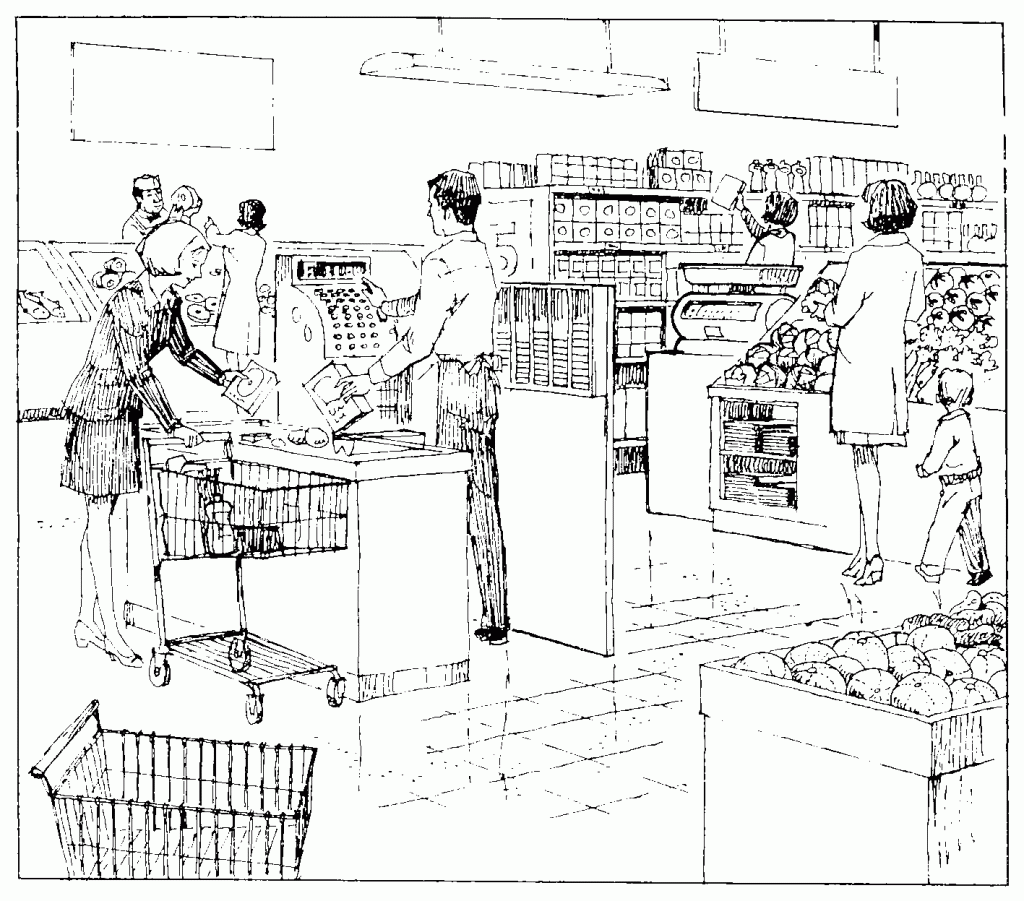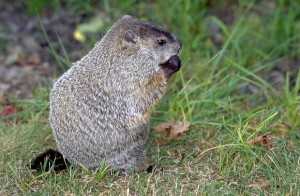1. What does the word “groceries” mean?
The word “groceries” refers to foodstuffs that you buy from a grocer.
2. What do you buy in this store?
In this store you can buy fruits, vegetables, meat, bread, canned goods, and packaged goods.
3. Who usually goes grocery shopping more often, men or women?
Women usually go grocery shopping more often than men.
4. What kind of fruit do you see in the foreground?
In the foreground you can see some type of pumpkin or squash.
5. What kind of vegetables do you see in this picture?
The vegetables we can see in this picture are cabbage, celery, and tomatoes.
6. Where are the paper bags?
The paper bags are under the counter.
7. Who is following the woman on the right?
A little boy is following the woman on the right.
8. What do you do with the scale?
With the scale we can weigh fruits and vegetables.
9. Which aisle has a sign hanging over it?
Aisle five has a sign hanging over it.
10. Who is standing at the cash register?
The checkout clerk (cashier) is standing at the cash register.
11. Where are the cigarettes?
The cigarettes are behind the cashier to his right.
12. Who is paying?
A woman is paying for her groceries.
13. How many shelves do you see in aisle five?
We see five shelves in aisle five, including the top shelf.
14. Is the woman in aisle five holding a box or a tin can?
The woman in aisle five is holding a box.
15. Does each woman in the picture have a shopping cart?
No, the only woman we see with a shopping cart is the woman at the checkout.
16. What does the butcher sell?
The butcher sells meat.
17. Can you buy fish in this store?
Yes, we can also buy fish from the butcher.
18. Where do you usually go after you go grocery shopping?
After we go grocery shopping, we usually go home.
19. Are you allowed to take the shopping cart home with you?
No, we are not allowed to take the shopping cart home with us.
20. Is this grocery store in a shopping center or in a small village?
This grocery store is probably not in a small village, but in a shopping center.
Paragraph: A Visit to the Grocery Store
Write a short paragraph about what you do when you go to the grocery store.
You go to the grocery store to buy fruits, vegetables, meats, and various packaged goods that you need for cooking and eating. After you park your car in the parking lot, you go inside the store and take a shopping cart. You go up and down the various aisles looking for the things that you need to get on this shopping trip.
It is usually a good idea to make a shopping list before you go to the store. If you make a list first, you know exactly what you need to get, and you won’t be so tempted to buy things you don’t really need. It is also a good idea not to shop when you are hungry. If you shop when you’re hungry, you usually buy things that are not on your list. This is known as impulse buying. Shopping with a list, and shopping when you’re not hungry, are good ways to avoid impulse buying.
Many people go grocery shopping once a week. Different stores have weekly sales, so it is also a good idea to plan what you buy to take advantage of the sales. Saturdays are busy days when more people go grocery shopping, so some people prefer to shop during off-peak times. Many supermarkets are open 24 hours a day, 7 days a week, so it is easy to pick a time to go grocery shopping that is convenient for you.
After you’ve gotten all the groceries that you need, you go to the checkout. If the store is crowded, you might have to look around to see which checkout lane is the shortest. When it’s your turn, you put all your groceries on the conveyor belt and wait for the cashier to ring them up. Most stores now have a scanner, so instead of entering the prices by hand at the cash register, all the cashier has to do is swipe the groceries over the scanner, and the price comes up automatically on the cash register. However, things that must be weighed, such as fresh fruits and vegetables, must still be entered by hand. The cashier puts the items on the scale and enters a code for the fruits or vegetables. The code indicates what the current price of the item is, and then the cash register calculates the total cost based on the weight of the item. Once the cashier has rung up all your groceries, you pay him. The cashier puts your groceries into bags. Sometimes he has a bagger who helps him by bagging the groceries and putting them in your cart for you. After all the groceries have been loaded in your cart, you can go to the parking lot and put the groceries in your car, go home, and put all the groceries away. Then you’re done grocery shopping for another week!



